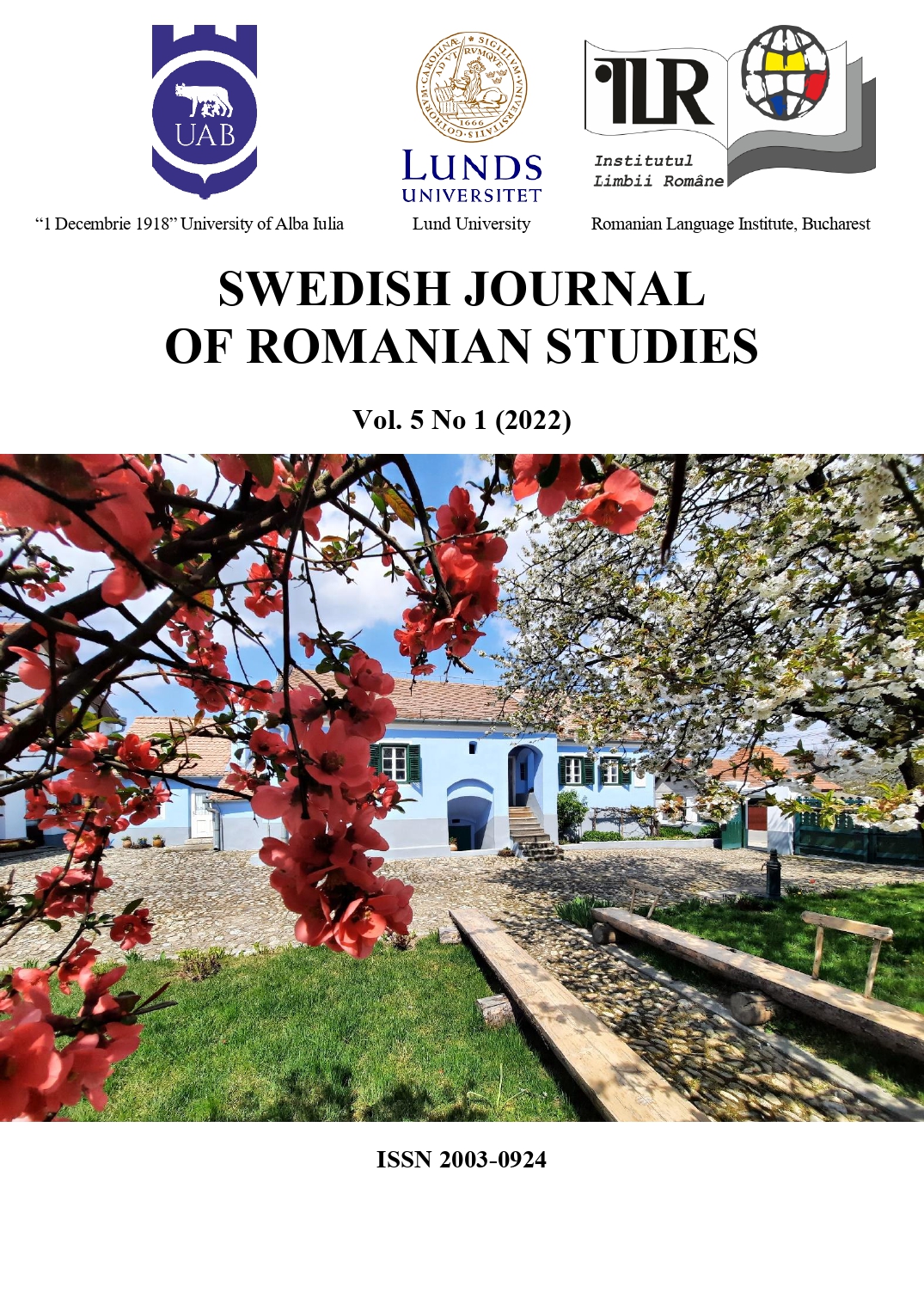From Mircea Eliade’s text to its cinematographic representations: the picture of Miss Christina as centre of the labyrinthine pathway
DOI:
https://doi.org/10.35824/sjrs.v5i2.23811Keywords:
labyrinth, symbol, character, literature, cinematographyAbstract
As commonly known the labyrinth represents not only a major element of the intercultural dialogue but also a cultural, mythological, religious, literary and artistic icon. Its pattern implies several stages, among which the initiation, the inner change and the conversion, all being meant to deeply modify the subject that is confronting such a complex pathway. Plunged into a space full of obstacles, the subject is continuously experimenting. Thus, he has to enter the labyrinth, to search the only true way through the labyrinth, to hesitate, to lose himself, to descend into Inferno, to split his soul, to find the centre of the labyrinth and finally to find the exit. Such complex patterns could be found in many of Mircea Eliade’s narrative texts. For the characters that find themselves trapped inside the maze every experience can be regarded as an attempt to reach the centre of the labyrinth. It is the case of the novel “Miss Christina”, where the protagonists, despite their efforts, miss their meeting in the centre of the labyrinth and implicitly their individual initiation. Since this centre stands for the place where two different types of worlds could find each other, it may be interpreted as the most important element of the labyrinthine pathway. The study intends to give an insight into the protagonists’ search for the centre as well as an analysis of the very centre as a synthesis between life and death. Having the form of a picture, this centre is meant to become a substitute of life. Exceeding the literary area, the analysis of Miss Christina’s picture takes into consideration its cinematographic representations as means of visual expression of the same experience.
References
Alexandrescu, S. (1999). Dialectica fantasticului/ The Dialectis of Fantastic. In Privind înapoi Modernitatea/ Looking back towards Modernity. București: Editura Univers.
Aristotle (1966). Fizica/ Physics. București: Editura Științifică.
Arnheim, R. (1997). Visual Thinking. Berkeley, Los Angeles, London: University of California Press.
***, (1974). Art and Visual Perception. Berkley, Los Angeles, London: University of California Press.
Béguin A. (1970). Sufletul romantic și visul/ The Romantic Soul and the Dream. București: Editura Univers.
Boldea, I. (2008). Mircea Eliade – discursul autobiografic/ Mircea Eliade – An Autobiographic Discourse. In Teme și variațiuni. București: Editura Ideea europeană & Europress.
Champeaux, G. de (1980). Introduction au monde des Symboles/ Introduction in the World of Symbols. Paris: Zodiaque.
Conty, P. (2002). The Genesis and Geometry of the Labyrinth, Architecture, Hidden Language, Myths and Rituals. Rochester, Vermont: Inner Traditions.
Eco, U. (2014). From the Tree to the Labyrinth. Cambridge, Massachusetts: Harvard University Press (Original work published 2007).
Eliade, M. (1992). Meșterul Manole. Studii de etnologie și mitologie/ The Masson Manole. Ethnological and Mythological Studies. Iași: Editura Junimea.
Eliade, M. (1993). Jurnal, vol. 1, 1941-1969/ Journal. București: Humanitas.
Eliade, M. (1986). Briser le toit de la maison/ Breaking the roof of the house. Paris: Gallimard.
Eliade M. (1994). Integrala prozei fantastice/ The Fantastic Prose Integral, vol. I-III. Iași: Editura Moldova.
Fisher, A. (2004). Mazes and Labyrinths. Oxford: Shire Publications Ltd.
Fînaru, S. (2007). Pe urmele lui Mircea Eliade. Reconstituirea Palimpsestului indian/ In Mircea Eliade’s Footsteps. The Restoration of the Indian Palimpsest. In Analele Universității Ștefan cel Mare Suceava, no.2
Heidegger, M. (2003). Ființă și timp/ Being and Time. București: Humanitas.
Ivanov, C. (2021). Representations of Evil in the Novels Miss Christina, The Snake and Isabel and the Devil’s Waters by Mircea Eliade. In Studia UBB Philologia, LXVI, 1. 71-86. DOI: 10.24193/subbphilo.2021.1.06.
Plato (1993). Timaios. București: Editura Științifică.
Poulet, G. (1961). Les métamorphoses du cercle/ The Metamorphosis of the Circle. Paris. Plon.
Ross, D. (2007). A Theory of Pure Design. Whitefish: Kessinger Publishing (Original work published 1907).
Scarlat, C. (2011). Mircea Eliade Once Again. Iași: Lumen Publishing House.
Simion, E. (2006). Mircea Eliade. Nodurile și semnele prozei/ Mircea Eliade. The Prose Knots and Signs. Iași: Editura Junimea.
Downloads
Published
How to Cite
Issue
Section
License
Copyright (c) 2022 Carmen Dominte

This work is licensed under a Creative Commons Attribution-NonCommercial 4.0 International License.
Authors who publish with this journal agree to the following terms:
a. Authors retain copyright and grant the journal right of first publication with the work simultaneously licensed under a Creative Commons Attribution-NonCommercial 4.0 International License that allows others to share the work with an acknowledgement of the work's authorship and initial publication in this journal.
b. Authors are able to enter into separate, additional contractual arrangements for the non-exclusive distribution of the journal's published version of the work (e.g., post it to an institutional repository or publish it in a book), with an acknowledgement of its initial publication in this journal.
c. Authors are permitted and encouraged to post their work online (e.g., in institutional repositories or on their website) prior to and during the submission process, as it can lead to productive exchanges, as well as earlier and greater citation of published work (See The Effect of Open Access).

